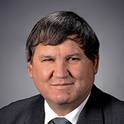
As the demand for biomass feedstocks grows, agricultural residue may be removed in a way that compromises soil sustainability due to increased soil erosion, depletion of organic matter and deterioration of soil physical characteristics. Since soil erosion from agricultural fields depends on several factors including soil type, field terrain and cropping practice, the amount of biomass that can be removed while maintaining soil tilth varies substantially over space and time. The RUSLE soil erosion model, which takes into account these spatio-temporal variations, was used to estimate sustainable agricultural biomass removal rates for single pass crop grain and biomass harvesting system. Soil type, field topography, climate data, management practices and conservation practices were stored in individual databases on a state and/or county basis. Geographic position of the field was used as a spatial key to access the databases to select site specific information such as soil, topography and management related parameters. These parameters along with the actual grain yield were provided as the inputs to the RUSLE model to calculate the yearly soil loss per unit area of the field. An iterative technique was then used to determine the site-specific biomass removal rate that keeps the soil loss below the soil loss threshold (T) of the field. The sustainable removal rate varied substantially with field terrain, crop management practices and soil type. At a location in a field in Winnebago county, Iowa with ~1% slope steepness and conventional tillage practice, up to 98% of 11 Mg/ha total corn stover was available for collection with negligible soil loss. The study, however, has considered only the soil erosion tolerance level and has neglected the potential effects in organic matter content and other biophysical properties of the soil due to excessive biomass removal. There was no biomass available to remove with conventional tillage practice in steep slopes such as a location in Crawford County, Iowa field with a 12.6% slope. If no-till crop practices were adopted, up to 70% of available biomass could be collected at the same location with 12.6% slope. In case of soybean-corn rotation with no-till practices, about 98% biomass was available for removal at the locations in Winnebago field with low slope steepness, whereas 77% biomass was available at a location in the Crawford field with 7.5% slope steepness. Sustainable removal rates varied substantial over an agricultural field, which showed the importance of site specific removal rate estimation. These sustainable removal rates will be provided as recommended rates for the producers to use during a single pass crop grain and biomass harvesting operation. This type of site-specific biomass removal rate estimation is necessary to achieve field level sustainability in agricultural biomass production and collection systems.
Available at: http://works.bepress.com/stuart_birrell/27/

ASAE Paper No. 1009973